
Lennox Claudius Lewis is a boxing commentator and former professional boxer who competed from 1989 to 2003. He is a three-time world heavyweight champion, a two-time lineal champion, and the last heavyweight to hold the undisputed championship. Holding dual British and Canadian citizenship, Lewis represented Canada as an amateur at the 1984 and 1988 Olympics; in the latter, he won a gold medal in the super-heavyweight division.

Joseph Louis Barrow was an American professional boxer who competed from 1934 to 1951. Nicknamed "the Brown Bomber", Louis is widely regarded as one of the greatest and most influential boxers of all time. He reigned as the world heavyweight champion from 1937 until his temporary retirement in 1949. He was victorious in 25 consecutive title defenses, a record for all weight classes. Louis had the longest single reign as champion of any boxer in history.

Rocco Francis Marchegiano, better known as Rocky Marciano, was an American professional boxer who competed from 1947 to 1955. He held the world heavyweight championship from 1952 to 1956, and remains the only heavyweight champion to finish his career undefeated. His six title defenses were against Jersey Joe Walcott, Roland La Starza, Ezzard Charles (twice), Don Cockell and Archie Moore.
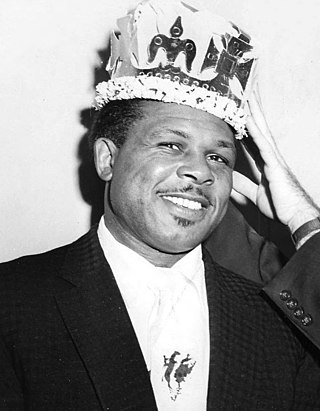
Archie Moore was an American professional boxer and the longest reigning World Light Heavyweight Champion of all time. He had one of the longest professional careers in the history of the sport, competing from 1935 to 1963. Nicknamed "The Mongoose", and then "The Old Mongoose" in the latter half of his career, Moore was a highly strategic and defensive boxer. As of December 2020, BoxRec ranks Moore as the third greatest pound-for-pound boxer of all time. He also ranks fourth on The Ring's list of "100 greatest punchers of all time". Moore was also a trainer for a short time after retirement, training Muhammad Ali, George Foreman, Bob Foster, Eddie Mustafa Muhammad, Earnie Shavers and James Tillis.
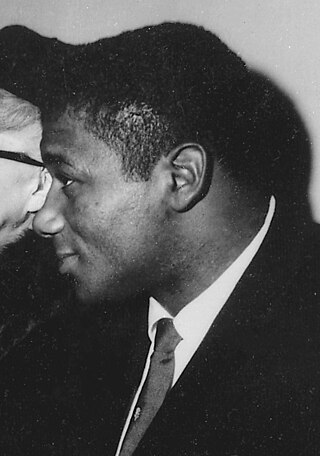
Floyd Patterson was an American professional boxer who competed from 1952 to 1972, and twice reigned as the world heavyweight champion between 1956 and 1962. At the age of 21, he became the youngest boxer in history to win the title, and was also the first heavyweight to regain the title after losing it. As an amateur, he won a gold medal in the middleweight division at the 1952 Summer Olympics. He is recognised as one of the best heavyweights of all time.

Arnold Raymond Cream, best known as Jersey Joe Walcott, was an American professional boxer who competed from 1930 to 1953. He held the NYSAC, NBA, and The Ring heavyweight titles from 1951 to 1952, and broke the record for the oldest man to win the title, at the age of 37. That record would eventually be broken in 1994 by 45-year-old George Foreman. Despite holding the world heavyweight title for a relatively short period of time, Walcott was regarded among the best heavyweights in the world during the 1940s and 1950s.
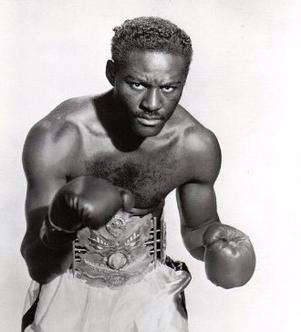
Ezzard Mack Charles, known as the Cincinnati Cobra, was an American professional boxer and World Heavyweight Champion, known for his slick defense and precision. Often regarded as the greatest light heavyweight of all time, Charles defeated numerous Hall of Fame fighters in three different weight classes. Charles retired with a record of 95-25-1. He was posthumously inducted into the International Boxing Hall of Fame in the inaugural class of 1990.
During the 1950s, a couple of relatively new developments changed the world: World War II had only been over for five years when the 1950s began, and television was beginning to make a major impact internationally. In boxing, changes connected to these developments could be seen too, as boxers who fought at the 1940s conflict returned to their homes and many of them were back in the ring. Television producers were in love with sports, which provided the viewer with an opportunity to observe sporting events live, and boxing was not the exception to the rule; many television networks began to feature fights live during the weekends, and the Gillette Friday Night Fights proved to be one of the most popular boxing television series in American history.

Jens Ingemar "Ingo" Johansson was a Swedish professional boxer who competed from 1952 to 1963. He held the world heavyweight title from 1959 to 1960, and was the fifth heavyweight champion born outside the United States. Johansson won the title by defeating Floyd Patterson via third-round stoppage, after flooring him seven times in that round. For this achievement, Johansson was awarded the Hickok Belt as top professional athlete of the year—the only non-American in its entire 27-year first run—and was named the Associated Press Male Athlete of the Year and Sports Illustrated Sportsman of the Year.
Boxing in the 1940s in many ways reflected worldwide events that affected other endeavors as well.

Harold Johnson was a professional boxer. He held the NYSAC, NBA/WBA, and The Ring light heavyweight titles from 1962 to 1963.

Antonio Deon Tarver is an American former professional boxer and boxing commentator. In boxing he competed from 1997 to 2015, and held multiple light heavyweight world championships, including the WBA (Unified), WBC, IBF and Ring magazine titles, as well as the IBO light heavyweight and cruiserweight titles.
Curtis Sheppard was an American boxer.
Duilio Spagnolo was an Italian boxer who was a heavyweight contender during the Joe Louis, Ezzard Charles, Jersey Joe Walcott and Rocky Marciano eras.
Donald John Cockell was an English boxer. He fought for most of his career as a light-heavyweight and became the British and European champion at that weight. Later in his career he moved up to heavyweight and held the British and Commonwealth heavyweight titles. He is best remembered for fighting against Rocky Marciano for the world heavyweight championship. Cockell defeated a number of top heavyweights in his career, including Roland La Starza, Harry Matthews, Tommy Farr, Freddie Beshore, Johnny Arthur, Johnny Williams and Uber Bacilieri. In his earlier incarnation as a Light Heavyweight he defeated top contenders such as Nick Barone, Albert Yvel, Lloyd Marshall and Albert Finch, holding regional titles in both weight incarnations.
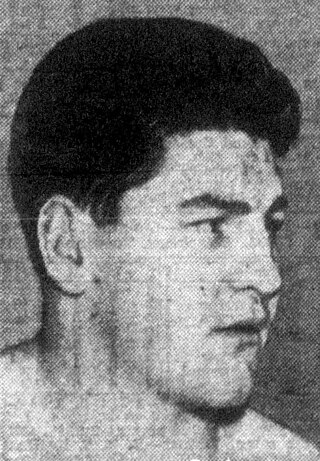
Rex Gessel Layne was an American heavyweight professional boxer. Sometimes termed the "Lewiston Larruper," Layne became a major contender in the early 1950s, although he never fought for the heavyweight title. Despite this he notched victories over many top rated boxers of his era, including future world champions Ezzard Charles and Jersey Joe Walcott.
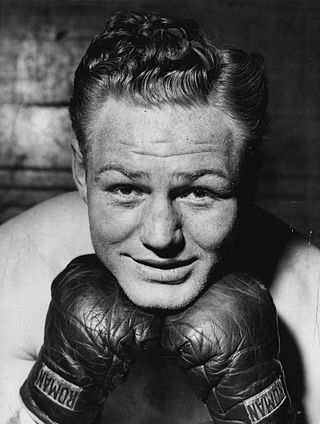
Lee Savold was an American heavyweight boxer who held the British and European (EBU) version of the World Heavyweight championship between 1950 and 1951 and was a leading contender in the 1940s and early 1950s. During his career he fought storied Heavyweight Champions Joe Louis and Rocky Marciano. Savold was inducted into the Minnesota Boxing Hall of Fame in 2012.

Abraham Simon was an American professional heavyweight boxer. He fought Joe Louis for the world heavyweight title twice. He was managed for most of his career by Jimmy Johnston, and trained by Freddie Brown. In 1940, he was rated the sixth best heavyweight in the world, and would rise higher in the next two years. After retiring, he became an actor and had roles in two of America's best-known movies about boxers, Academy Award winner On the Waterfront and Requiem for a Heavyweight.
Carmine Vingo was a world ranked heavyweight boxer best remembered for his career-ending bout with future world heavyweight champion Rocky Marciano, cumulating in his knockout and resulting brain injury.

Rocky Marciano and Roland La Starza fought each other on two separate occasions, the first time in 1950 both as undefeated contenders and the second in a heavyweight championship fight in 1953. Rocky won both fights, the first by a narrow split decision and the second via technical knockout. The first fight is regarded as one of Marciano's closest fights, and the second was declared 1953's Fight of the Year by The Ring.














